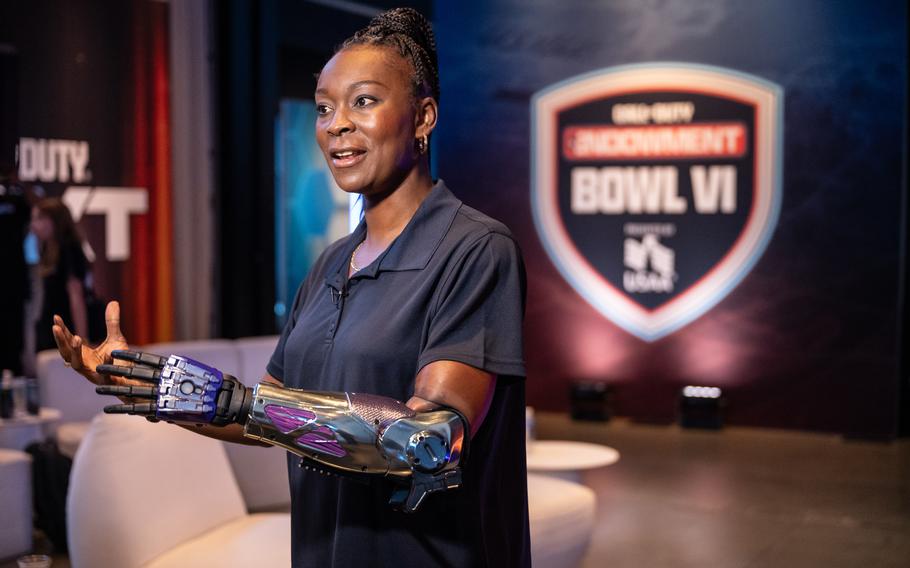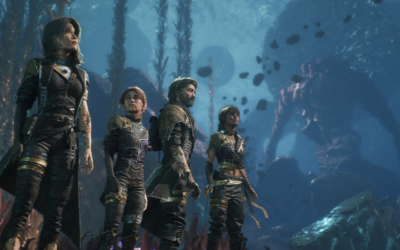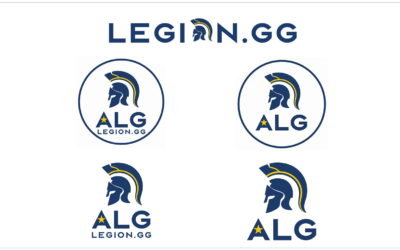When Army veteran Danielle Green enters the gaming world as a character in Call of Duty, it’s a meaningful convergence of real-life experience, adaptive technology and veteran advocacy.
Green, a Purple Heart recipient whose military service ended after a rocket-propelled grenade strike in Iraq cost her an arm, is now embodied in a character skin in the next Call of Duty pack. As reported by Stars and Stripes, the character’s design was modified to reflect Green’s real-life prosthetic from Open Bionics, including the purple highlights of her medal, and other personal insignia.
From Rooftop in Baghdad to Digital Battlefield
Green was serving as a military police officer at Joint Base Lewis–McChord (formerly Fort Lewis) when she deployed to Baghdad in early 2004 to train Iraqi police units. On a rooftop under heavy insurgent fire, she was hit by an RPG projectile. Waking in a hospital bed, she realized her right arm had been lost. She later described the mix of shock, anger and grief—not only for her arm, but for the military career she’d only begun.
The downloadable content (DLC) pack in Call of Duty will allow players to select the Green-inspired character, whose details include the date of her injury, her basketball number from Notre Dame (12), and the purple coloration of the Purple Heart.
Proceeds from the pack will support the Call of Duty Endowment, the nonprofit dedicated to helping veterans find high-quality employment after service.
Green’s inclusion highlights a shift: the industry is increasingly placing real veterans—not just fictional ones—into its narratives. The fact that a major game franchise is aligning with a real prosthetic-technology firm and a veteran’s personal story speaks volumes.
A similar movement can be seen in Six Days in Fallujah, a tactical shooter that sought to authentically depict the 2004 battle from the perspective of U.S. Marines and Iraqi civilians. Like Green’s character in Call of Duty, Six Days in Fallujah blurred the line between entertainment and lived experience, using firsthand accounts to ground gameplay in the reality of war rather than stylized heroism.
The Arm Behind the Avatar
Open Bionics’ prosthetic model, the Hero RGD (pronounced “rugged”), played a direct role in Green’s character design. The company, which specializes in 3-D printed arms for active users, had worked with Green and other veteran users on design feedback, Stars and Stripes reported.
“Samantha Payne [CEO of Open Bionics] reached out to me in April… it was more than just the game—it was the real-life version of it,” Green said in the article.
And Open Bionics confirmed that many of their veteran clients are very active, fit individuals—exactly the profile Green embodies.












nice
That’s really great; love to see wounded veterans treated to some fun.
This is very different.
Twilight zone
Love this so much
I appreciate you sharing this blog post. Thanks Again. Cool.
I think this is awesome!!
Nice
Heck yes. I had no idea!
That is freaking awesome!!!
I’m glad they are honoring her in this very cool way.. you serve your country and get injured, you deserve to be a gaming character!
Nice
Congrats to her l
hey 😊 that’s cool ❤️
This is awesome
Yup
I love how this story goes.
Wow, that is awesome!
Winner fer sure
What an amazing way to honor Danielle’s courage and story – turning her real-life strength into digital inspiration!
Awesome, glad to see her story and courage into something that can be further appreciated.
Its awesome to see someone with prosthetics in our games! and as a Vet myself it touches my heart even more to see a Hero like Daniel Green being put into a game@!
Winning